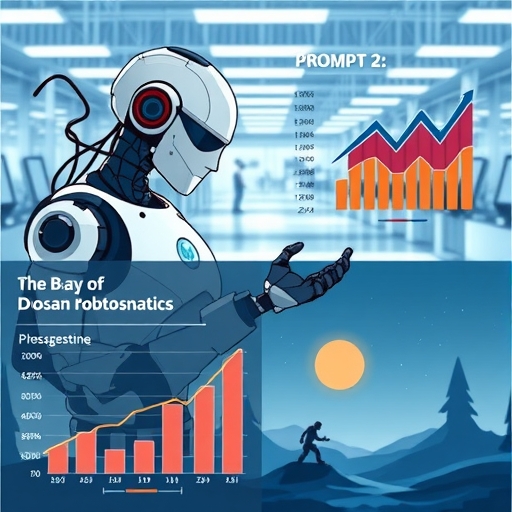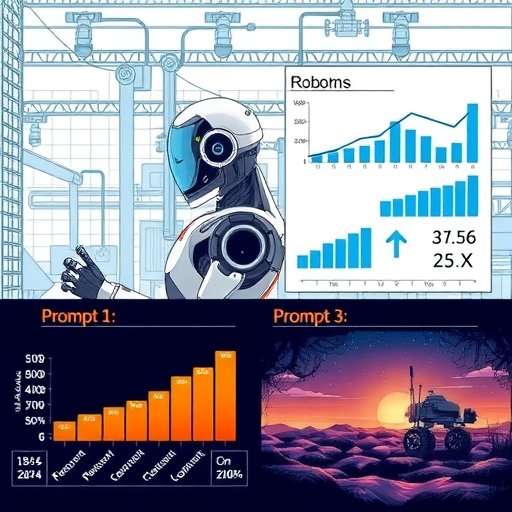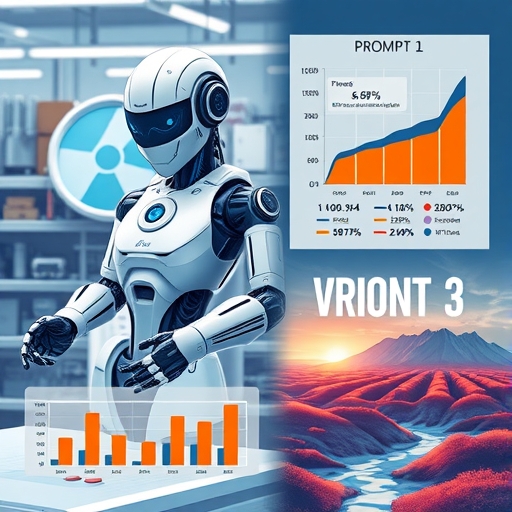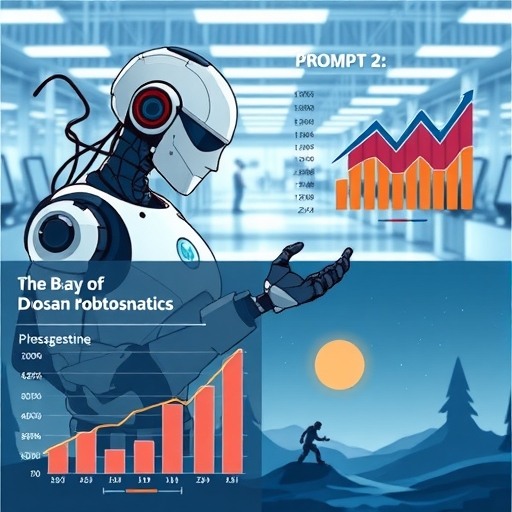Understanding Doosan Robotics Stock (454910.KS): A Deep Dive into its Financials, Valuation, and Path to Profitability
Welcome, aspiring investors and seasoned traders! We’re about to embark on a detailed exploration of Doosan Robotics Inc. (454910.KS), a company at the forefront of the collaborative robotics industry. Understanding a stock like this requires digging beyond the headlines and looking at the underlying data – its financial health, how it’s valued by the market, and what analysts predict for its future. Think of us as your guide through this intricate landscape. We’ll dissect the key metrics, explain what they mean, and help you piece together the puzzle of whether this innovative player in the South Korean market fits into your investment perspective.
Our goal is simple: to provide you with the knowledge to make informed decisions. Doosan Robotics operates in a dynamic, high-growth sector, but like many companies in an intense investment phase, it presents a complex financial picture. Let’s break it down, step by step, just like we would in a classroom.
Doosan Robotics at a Glance: Company Profile and Market Position
First, let’s establish who Doosan Robotics Inc. is. Based in Suwon-si, South Korea, this company is a dedicated developer and manufacturer of **collaborative robots (cobots)** and other **industrial robots**. Cobots, as you may know, are designed to work safely alongside humans, making them increasingly popular in various industries for tasks ranging from manufacturing and logistics to food service and healthcare. Doosan Robotics is a key player in this niche but rapidly expanding market.
Operating as a subsidiary of the larger **Doosan Corporation**, Doosan Robotics is focused intently on its core business – designing, producing, and selling its range of collaborative robot products. Unlike diversified conglomerates, its structure is lean, concentrating expertise on this specific technology. The company has a global market reach, with sales extending beyond its home market in **South Korea**.
While the global **robotics industry** is competitive, Doosan Robotics has carved out a position, evidenced by its listing on the Korea Stock Exchange (KRX) under the ticker symbols **454910.KS** and **KRX:454910**. As investors, understanding the company’s fundamental business and where it sits within its industry is the crucial first step before diving into the numbers.

Current Financial Landscape: Navigating Losses and Profitability Metrics
Now, let’s get into the financials, which for Doosan Robotics (454910.KS) present a picture characteristic of many high-growth, investment-focused companies: current losses.
Looking at the **trailing financial performance**, as of various dates in 2024 and 2025, the company has reported losses. For instance, data from April 12, 2024, showed **Trailing Net Income (Avi to Common, ttm)** at **-₩15.87 billion**. More recent data from June 2025 indicated reported **losses** of **₩37 billion** for the fiscal year (FY loss) and **₩43 billion** for the trailing twelve months (TTM loss). What does a loss mean in this context? It signifies that the company’s expenses, primarily related to research and development, manufacturing scale-up, and sales expansion, currently exceed the **revenue** it generates from selling its robots.
Examining **profitability metrics** further illustrates this phase. As of April 12, 2024 (ttm), the company had a **Profit Margin** of **-29.93%**. Similarly, **Return on Assets (ROA)** was **-4.62%** and **Return on Equity (ROE)** was **-6.59%**. Data from April 30, 2025, showed normalized figures like **ROA -6.86%**, **ROE -7.13%**, and **Return on Invested Capital (ROIC) -9.28%**. These negative figures are a direct consequence of the net loss and indicate that, currently, the company is not efficiently generating profits from its assets, equity, or invested capital. For an investor, seeing negative profitability metrics isn’t necessarily a red flag in itself, *if* it’s understood as part of a deliberate strategy to invest heavily for future growth. The key is to assess the *reason* for the losses and the *potential* for future profitability.
Understanding these metrics is vital. While established companies aim for high positive margins and returns, companies in the **investment phase** often show negative results as they prioritize market penetration, R&D, and infrastructure build-out over immediate profit generation. The question for us becomes: how long are these losses expected to continue, and what is the plan to reach profitability?
| Metrics | As of April 2024 | As of April 2025 |
|---|---|---|
| Profit Margin | -29.93% | – |
| ROA | -4.62% | -6.86% |
| ROE | -6.59% | -7.13% |
Balance Sheet Strength: Cash Position and the ‘No Debt’ Advantage
Despite operating at a loss, one notable aspect of Doosan Robotics’ (454910.KS) financial health, according to some reports, is its **balance sheet**. A strong balance sheet can provide resilience during growth phases and periods of market volatility. As of April 12, 2024 (mrq), the company reported **Total Cash** of **₩382.01 billion**. This is a significant cash hoard for a company with trailing revenue around ₩53 billion.
Furthermore, some sources like Simply Wall St (June 2025 data) specifically highlight that the company reportedly has **”no debt on its balance sheet”**. While other data from April 12, 2024, showed a Total Debt/Equity (mrq) of 1.18% (which is still very low), the notion of ‘no debt’ is particularly striking for a growth company. Companies typically take on debt to fund ambitious expansion plans, R&D, and capital expenditures. Avoiding significant debt financing means the company isn’t burdened by interest payments and principal repayments, which can drain cash flow, especially when revenues are low or non-existent.
How does this impact **investment risk**? A company with little to no debt is generally considered less risky financially than one heavily leveraged. In tough economic times or if growth stalls, debt obligations can become unsustainable. Doosan Robotics’ reported strong cash position and lack of debt provide a cushion, allowing it to fund its operations and growth initiatives primarily through existing capital or potentially future equity raises without the pressure of debt servicing. This financial structure is an important consideration for investors assessing the company’s long-term viability and its ability to weather potential setbacks on its path to profit.
| Item | Amount (₩) |
|---|---|
| Total Cash | ₩382.01 billion |
| Total Debt/Equity | 1.18% |
Valuation Analysis: Deciphering High Multiples in a Growth Story
Now, let’s tackle one of the most complex aspects of analyzing a growth stock like Doosan Robotics (454910.KS): its **valuation**. When a company is losing money, traditional valuation metrics like the **Price-to-Earnings (P/E) ratio** are either negative or undefined (“–“). This forces investors to look at other multiples, particularly those based on sales or book value, even though these can appear extremely high for growth companies.
Let’s look at the numbers. As of April 12, 2024, the **Price/Sales (ttm)** ratio was **76.72**. As of April 30, 2025, it was **70.87**. What does a P/S of 70+ mean? It means investors are currently willing to pay over 70 times the company’s annual revenue for each share. This is extraordinarily high by conventional standards and suggests very optimistic expectations for massive future revenue growth. Similarly, the **EV/Revenue** ratio was **86.88** (4/12/2024), and Marketscreener forecasts **EV/Sales** at **70x** for 2025* and **31.3x** for 2026*. The **Price/Book (mrq)** ratio was **11.36** (4/12/2024) and **8.24** (Apr 30, 2025), also indicating investors are paying a substantial premium over the company’s net asset value.
Why are these multiples so elevated? They reflect the market’s anticipation of rapid future growth and eventual profitability. Investors are essentially pricing in years, perhaps even a decade or more, of significant expansion. This leads to another crucial data point: the estimated **Trading Premium** relative to **Morningstar’s Fair Value**. As of April 30, 2025, the stock was trading at an estimated **823% premium** to Morningstar’s calculated Fair Value. This massive premium underscores the speculative nature of the current valuation, driven by future potential rather than present financial performance. For investors, it means you are paying a very high price for future growth, which introduces its own set of risks.
| Valuation Metrics | As of April 2024 | As of April 2025 |
|---|---|---|
| Price/Sales | 76.72 | 70.87 |
| EV/Revenue | 86.88 | 70.00* |
| Price/Book | 11.36 | 8.24 |
The Path to Profitability: Analyst Expectations and Growth Projections
Given the current loss-making status and high valuation, the key question for anyone considering Doosan Robotics (454910.KS) is its **path to profitability**. This is where analyst **forecasts** and **projections** become particularly important.
According to the consensus among analysts (specifically mentioned as 3 South Korean Machinery analysts in one source), the company is anticipated to reach **breakeven** in **2026**. Furthermore, they project the company will achieve positive **net income** of **₩20 billion** in that year, following an expected final loss in **2025** (Marketscreener forecasts -₩30B Net Income for 2025*).
Reaching breakeven and then achieving profitability requires significant growth. One source estimates that an annual **growth rate** of **98%** is required for the company to hit its breakeven target. This rate is described as “rather optimistic,” which is a professional way of saying it’s a very challenging target. However, it’s framed within the context of the company being in an intensive **investment phase**, where high growth rates are expected and necessary to capitalize on market opportunities and eventually achieve scale.
What does a 98% required growth rate mean for investors? It highlights the high stakes. The investment thesis relies heavily on the company’s ability to rapidly increase sales and improve operational efficiency. Any significant deviation from this ambitious growth trajectory could have a substantial impact on the stock’s performance and the timeline for profitability. Investors should monitor the company’s revenue growth each quarter and year against these demanding forecasts.
Risks and Uncertainty: Assessing the Challenges Ahead
Investing in a growth company like Doosan Robotics (454910.KS), particularly one operating at a loss and trading at a premium, inherently involves **risk** and **uncertainty**. It’s crucial to acknowledge these factors.
**Morningstar**, for example, assigns a **”Very High” Uncertainty** rating to Doosan Robotics. What does this mean? It indicates that Morningstar analysts have low confidence in their ability to forecast the company’s future results and estimate its fair value due to various factors. These could include the volatility of the robotics market, the intensity of competition, potential technological disruption, execution risks related to rapid growth, or challenges in achieving projected cost efficiencies.
We’ve already discussed the **trading at a significant premium** to estimated fair value and the ambitious **98% required growth rate**. Failure to meet growth targets or delays in achieving profitability are substantial risks. Competition from other global robotics companies, supply chain issues, or broader economic downturns affecting industrial automation spending could also impact the company’s performance.
However, we must balance these risks with potential mitigating factors. The reported **no debt** position, as discussed earlier, does reduce financial risk compared to heavily leveraged peers. This financial flexibility is a strength. While the source data mentions “Economic Moat” as “non-standard” (likely a data formatting issue), investors should consider what competitive advantages Doosan Robotics might have – perhaps specific technology, patent protection, brand reputation, or strong customer relationships – that could help it sustain growth and defend market share in the long run.
As investors, we need to weigh these risks carefully against the potential rewards of investing in a company targeting leadership in a promising industry. The “Very High” Uncertainty rating is a clear signal that this is not a low-risk investment, and outcomes could vary significantly from current expectations.
Stock Performance and Market Context
Beyond the fundamentals, let’s look at how Doosan Robotics stock (454910.KS) has performed in the market and some key price points.
Comparing its performance to the broader South Korean market index, the **KOSPI Composite Index**, provides context. As of April 12, 2024, the trailing **stock returns** were:
- YTD (Year-to-Date): 1.00% (vs KOSPI)
- 1-Year: 11.58% (vs KOSPI)
(Note: The identical 1, 3, and 5-year figures in the source data for 11.58% vs KOSPI seem like a potential data anomaly, so we’ll focus on the YTD and 1-year figures where they differ). These figures suggest the stock’s performance has been broadly in line with or slightly ahead of the KOSPI over these periods, though specific periods can show greater divergence.
More recent price data provides a snapshot. As of July 04, 2025, the latest reported **Price** was **₩62,400.00 KRW**, showing a +1.30% change on that specific day. Looking back slightly, price changes as of the July 03, 2025 week-end showed a -5.60% drop over 1 week, but significant positive moves over longer recent periods: +25.43% over 1 month and +34.48% over 3 months, with a YTD gain of +19.31% as of that date. This volatility is common for growth stocks and reflects changing market sentiment and company-specific news.
The **52-Week Range**, as of April 30, 2025, was **₩39,550.00 – ₩109,300.00**. This wide range illustrates the significant price swings the stock has experienced over the past year. For traders, this volatility can present opportunities, while for long-term investors, it highlights the emotional fortitude required to hold through large drawdowns.
Finally, let’s consider the **Analyst Target Price** from Marketscreener, which is **₩63,250.00 KRW**. Comparing this to the last reported price of ₩62,400.00 suggests a small potential upside of +1.36% from that specific close, based on this particular analyst consensus. Analyst targets are just one data point, of course, and should be considered alongside your own research.

Shareholder Information and Governance Insights
Understanding the shareholder structure and recent governance decisions can also provide valuable context for investors in Doosan Robotics (454910.KS). As of December 31, 2024, the company had a **Total No. of Issued Shares** of **64,819,980** (Common stock), all of which carry **full voting rights** at shareholder meetings.
**General Meetings of Shareholders** are key events for corporate governance. Doosan Robotics held recent meetings on March 28, 2024, and March 31, 2025. The **attendance rates** were relatively high: **76.83%** in 2024 and **77.54%** in 2025. This suggests a significant level of shareholder engagement.
The **voting results** from these meetings show strong support for management and proposed resolutions. At the 2025 meeting, there were high approval rates (ranging from **93.53% to 99.94%**) for key items such as the approval of financial statements, the appointment of directors (Minpyo Kim, Hyeleon Yoo – specifically for the Audit Committee), and setting the director remuneration limit. Similarly, the 2024 meeting saw exceptionally high approval rates (**99.96% to 99.99%**) for financial statements and director appointments (Junghoon Ryu, Gilsung Cho).
What can we infer from this? High approval rates typically indicate confidence from the majority of voting shareholders in the company’s management, strategy, and financial reporting. It suggests corporate governance is operating smoothly from a shareholder perspective. The presence of an **ESOP (Employee Stock Ownership Association)** among shareholders also aligns employee incentives with company performance, which can be a positive factor. Marketscreener reports a **Free-Float** of **30.12%**, meaning about 30% of the shares are readily available for public trading, while the remainder is held by insiders or strategic investors.
Evaluating Cash Flow and Liquidity
Let’s take a closer look at the company’s **cash flow** and **liquidity**, which are critical for sustaining operations and funding growth, especially for a company currently incurring losses.
Cash flow indicates the actual movement of money in and out of the business. As of April 12, 2024 (ttm), Doosan Robotics reported **Levered Free Cash Flow** of **-₩32.62 billion**. Negative free cash flow is typical for companies in a heavy investment phase. It means the cash spent on operations and capital expenditures exceeds the cash generated from operations. This is consistent with the reported net losses and the company’s focus on building out its capabilities. Sustaining negative free cash flow over extended periods requires access to capital, which, as we noted, is currently supported by the company’s existing cash reserves and lack of debt.
**Liquidity ratios** assess a company’s ability to meet its short-term obligations. Data from April 30, 2025, shows very strong liquidity: a **Quick Ratio** of **19.80** and a **Current Ratio** of **22.14**. These ratios compare current assets (like cash, receivables, and inventory) to current liabilities (obligations due within one year). Ratios above 1.0 are generally considered healthy, indicating the company has sufficient liquid assets to cover its short-term debts. Ratios as high as 19.80 and 22.14 are exceptionally strong and underscore the significant cash holdings we discussed earlier. This robust liquidity position provides substantial financial flexibility and reduces the risk of short-term financial distress, which is a significant positive point for investors, particularly given the negative profitability and cash flow from operations.
| Liquidity Ratio | Value |
|---|---|
| Quick Ratio | 19.80 |
| Current Ratio | 22.14 |
Understanding the Investment Phase
To truly grasp the financial picture of Doosan Robotics (454910.KS), it’s essential to understand what it means to be in an **investment phase**. This isn’t just a buzzword; it’s a strategic state where a company prioritizes long-term market position and revenue growth over immediate profitability.
During an investment phase, companies typically:
- Invest heavily in **Research and Development (R&D)** to innovate and improve products (e.g., developing next-generation cobot capabilities).
- Spend significantly on **Sales and Marketing** to build brand awareness, establish distribution channels, and acquire new customers globally.
- Increase **Capital Expenditures (CapEx)** to expand manufacturing capacity, build infrastructure, or acquire necessary equipment.
- Potentially experience **negative operating margins** and **net losses** as these costs outpace revenue.
- Often require significant funding, either through equity raises (like an IPO or follow-on offerings) or debt financing (though Doosan Robotics is notable for avoiding this).
Doosan Robotics’ financial data aligns with this profile: reported losses, negative profitability metrics, negative free cash flow, and high valuation multiples based on future expectations. The analyst projection of a **98% required annual growth** for breakeven directly reflects the aggressive expansion plans inherent in this phase. The company is spending money now with the expectation that these investments will lead to a much larger, profitable business in the future. For investors, this means accepting current losses in exchange for the potential for substantial future gains if the company successfully navigates this demanding phase.
Conclusion: Balancing Potential, Price, and Performance
Doosan Robotics (454910.KS) represents a compelling, yet complex, investment opportunity within the burgeoning collaborative robotics sector. We’ve seen that the company is currently operating at a loss, a common characteristic for innovative firms in an aggressive **investment phase**. Its profitability metrics are negative, reflecting the significant costs associated with R&D, sales expansion, and building scale.
However, we also noted key strengths: a reported **no debt** position and substantial **cash reserves**, providing a strong balance sheet and significant financial flexibility. The company’s **liquidity ratios** are exceptionally high, indicating a robust ability to meet short-term obligations.
The market currently values Doosan Robotics at a very high **premium**, with elevated **Price/Sales** and **Price/Book** multiples, reflecting strong investor optimism about its future growth prospects. Analysts forecast the company to reach **breakeven** and achieve positive **net income** in **2026**, but this relies on achieving a very demanding **required growth rate** of nearly 100% annually.
The **Very High Uncertainty** rating from Morningstar serves as a clear reminder of the execution **risk** involved in meeting such ambitious targets in a competitive and evolving industry. While shareholder approval rates suggest stable governance, the stock’s **volatility** (evident in its wide 52-week range and recent price swings) means it may not be suitable for risk-averse investors.
For those interested in high-growth technology stocks and the future of automation, Doosan Robotics offers exposure to a promising market. However, you must weigh the potential rewards of successful execution against the risks associated with its current lack of profitability, demanding growth requirements, and premium valuation. As with any investment, thorough personal research and careful consideration of your own risk tolerance are paramount.
By understanding the nuances of its financial health, valuation, and future outlook – balancing the optimism reflected in its stock price with the realities of its current financial state and the challenges of its growth path – you can approach an investment decision regarding Doosan Robotics (454910.KS) with greater confidence and clarity. We hope this detailed analysis has provided you with valuable insights on your investment journey.

doosan robotics stockFAQ
Q:What is the current financial position of Doosan Robotics?
A:Doosan Robotics is currently operating at a loss, with negative profitability metrics and significant cash reserves, but no debt on its balance sheet.
Q:When do analysts expect Doosan Robotics to reach breakeven?
A:Analysts anticipate that Doosan Robotics will reach breakeven in 2026, with a required annual growth rate of 98% to achieve this target.
Q:What risks are associated with investing in Doosan Robotics?
A:The main risks include high valuation multiples, potential delays in profitability, and a very high uncertainty rating from Morningstar regarding the company’s future performance.

留言